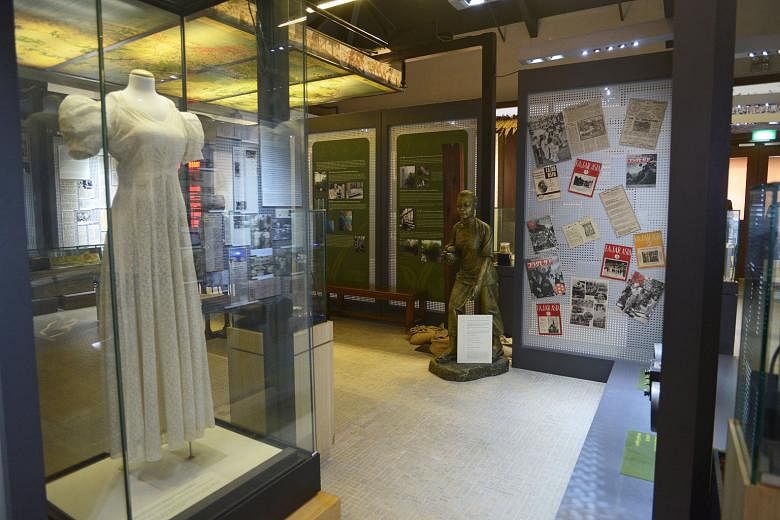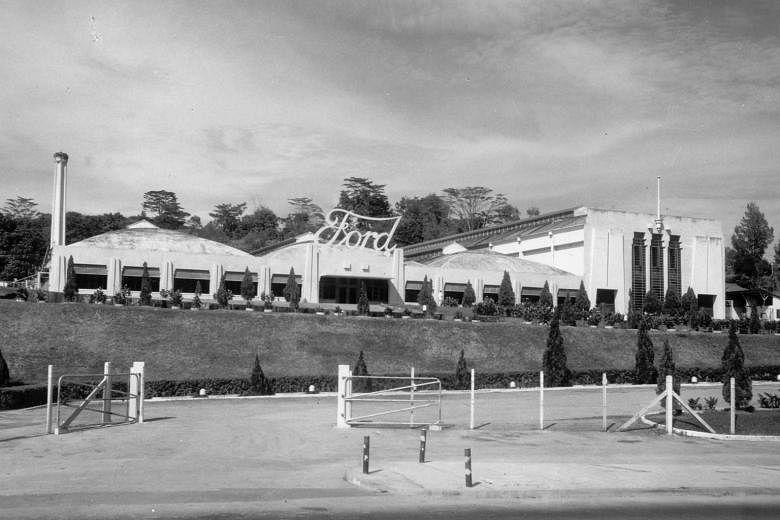Tucked away in a quiet stretch of Upper Bukit Timah Road is a museum which, amid a cluttered display of photographs and text-heavy write-ups, holds a room of key significance to Singapore's story.
It was where the country's surrender documents were signed between General Yamashita Tomoyuki and British Lieutenant-General Arthur Percival on Feb 15, 1942.
Now, the 10-year-old Memories at Old Ford Factory will be undergoing a year-long revamp.
The National Archives of Singapore (NAS) permanent gallery on the Japanese Occupation will close its doors on Feb 16 to develop a "more exciting and dynamic" exhibition to bring its static records to life. It aims to do this by collecting World War II artefacts and records from the community, said project leader Janelle Chua, a manager at NAS' exhibitions and outreach department.
NAS will conduct a collection drive for records and artefacts dating from 1937 to 1954, on events such as the Sook Ching massacre and the China war-relief efforts.
It is also encouraging the public to contribute maps, diaries and letters, among other things.
The drive will be held on March 12 at the National Library in Victoria Street, from 10am to 4pm.
Ms Chua said: "It is only with community involvement that we will be able to paint a clearer picture of what it was like during the Occupation."
The museum is popular with school groups.
It receives about 40,000 visitors each year, of whom 44 per cent are students and teachers.
It was at the former Ford factory's boardroom that Singapore's surrender documents were signed.
The boardroom, with a replica of the long teak table on which the documents were inked, will be retained in the revamp, said Ms Chua.
The 1941 building was the first car- assembly plant in South-east Asia.
It was used by the Japanese as their headquarters during the Occupation, and returned to the British Military Administration for two years after the war. Car-assembly operations resumed up till 1980, when Ford Motor Works closed.
Save for its front portion, the quasi-art deco building was partially demolished in 1997 for the development of The Hillside condominium.
NAS, which took over the remaining part of the building in 2004, spent $10 million to convert the factory space into a museum.
It added a 75-seat theatre and a garden featuring common wartime crops such as tapioca.
The building was gazetted as a national monument in 2006.
NAS, an institution under the National Library Board, said costs for the upcoming revamp have yet to be fixed. It said it is in the midst of finalising details with the vendors, adding that multimedia displays are in the pipeline.
Oral history recordings are also expected to feature heavily in the exhibition. The current exhibition features more than 40 such recordings on various topics, including the mass killings and air raids during the Occupation.
Admission will remain free for Singaporeans and permanent residents after the revamp. Tickets will cost $3 for other visitors.



